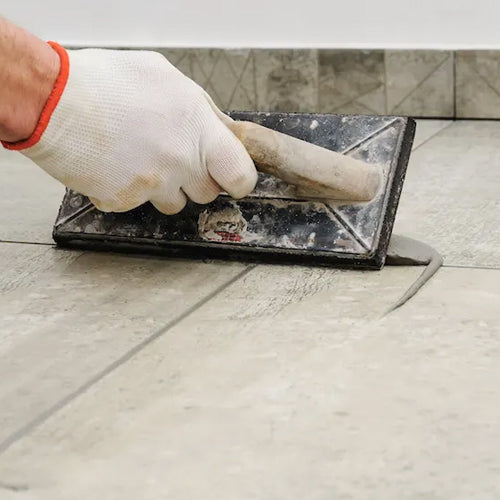
Mastering the Art of Grouting Tiles for Perfect Spaces
Grouting tiles is a crucial step in any tiling project, influencing both the aesthetic appeal and longevity of the installation. In this comprehensive guide, we’ll explore the significance of proper grouting and provide essential tips to help you achieve flawless, long-lasting results.
Understanding the Importance of Grouting
Grout serves more than just a cosmetic purpose; it plays a vital role in maintaining the structural integrity of your tile installation. Grout fills the gaps between tiles, preventing moisture and dirt from infiltrating the spaces beneath. Properly applied grout not only enhances the visual appeal of your tiles but also ensures the durability of the entire surface.
Selecting the Right Grout for Your Project
The first step to achieving perfect spaces through grouting is choosing the right type of grout. Grout comes in various formulations, including sanded and unsanded options, as well as different colors. Sanded grout is suitable for wider gaps between tiles, while unsanded grout is ideal for thinner seams. Consider the overall look you want to achieve and the specific requirements of your tile project when selecting grout.
Prepping the Tiles for Grouting: Essential Steps
Before diving into the grouting process, it’s crucial to prepare the tiles adequately. Ensure that the tiles are firmly set, with any excess adhesive removed. Clean the gaps between tiles to eliminate dust or debris that could hinder the grout’s adhesion. This meticulous preparation sets the stage for a smooth and effective grouting experience.
Mixing and Applying the Grout: A Step-by-Step Guide
Mixing grout to the right consistency is an art in itself. Follow the manufacturer’s instructions carefully, combining the grout powder with water to create a lump-free mixture. Using a rubber float, apply the grout diagonally across the tiles, ensuring that all gaps are adequately filled. Work in small sections to prevent the grout from drying before you can finish.
To learn more about the step-by-step grouting process, visit Grout Tile.
Removing Excess Grout: Finishing Touches
Once you’ve applied the grout, it’s time to remove the excess before it fully dries. Use a damp sponge to wipe away the surplus grout from the tiles, working at a 45-degree angle to avoid removing too much. Rinse the sponge frequently to maintain its effectiveness. This step is crucial for achieving clean lines and a polished appearance.
Sealing the Grout: Enhancing Durability
While not mandatory, sealing the grout is an additional step that can significantly enhance its durability. Grout is porous, and sealing helps protect it from stains, moisture, and discoloration. Select a high-quality grout sealer and apply it after the initial curing period, following the manufacturer’s recommendations.
Dealing with Common Grouting Issues: Troubleshooting Tips
Even with careful execution, grouting may encounter issues such as uneven color or cracking. In such cases, don’t panic; instead, troubleshoot the problem. Uneven color may result from inconsistent mixing, while cracking may be due to overwatering the grout mix. Understanding and addressing these issues promptly ensures a flawless finish.
Curing and Cleaning: Patience Pays Off
After grouting, allow sufficient time for the grout to cure before subjecting it to heavy use or cleaning. Follow the manufacturer’s guidelines for the recommended curing period. Once cured, clean the tiles with a gentle, pH-neutral cleaner to remove any remaining grout haze and reveal the full beauty of your perfectly grouted spaces.
Conclusion: Elevate Your Tile Projects with Expert Grouting
Mastering the art of grouting tiles is a skill that elevates the overall quality and appearance of your tile installations. From selecting the right grout to meticulous application and troubleshooting, each step contributes to the success of your project. Embrace these tips, and transform your spaces into stunning, perfectly grouted showcases of craftsmanship.










